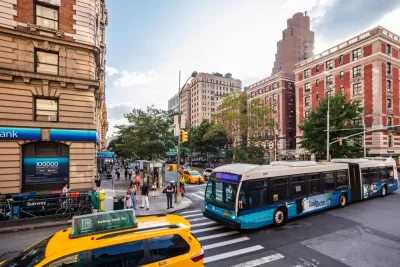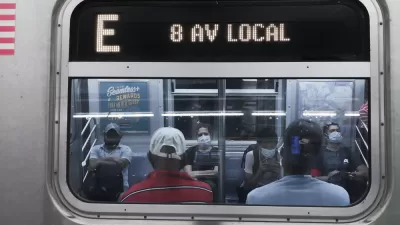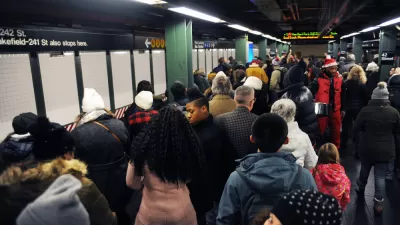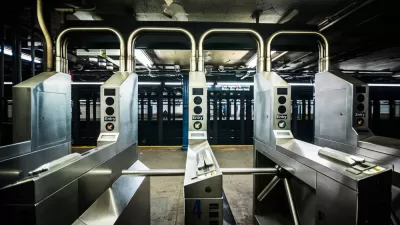Critics of the city's transit assistance program say limiting eligibility to people living at or below the federal poverty line excludes many low-income New Yorkers who depend on public transit.

An article by Niamh Rowe describes New York City mayor Eric Adams' plan to fund the city's Fair Fares transit assistance program, which some critics are calling an inadequate effort to ensure everyone can afford to travel by public transit. According to Rowe, "The plan would cut train and bus fares by half for New Yorkers with incomes at or below the federal poverty level who are not eligible for other transit subsidies or benefits such as those for people with disabilities." The mayor has pledged $75 million to the program for the coming fiscal year, down from $106 million in 2019.
But advocates say the program doesn't go far enough to support New Yorkers who live just above the federal poverty line in one of the country's most expensive cities. According to Danny Pearlstein, policy and communications director of the Riders Alliance, "Two hundred percent of poverty is probably the sweet spot" in New York. Additionally, the program's low visibility means only one-third of eligible New Yorkers are using it. "It can’t be called public transit unless it’s fully accessible to the public," says community organizer Rana Abdelhamid in the article. Advocates like Pearstein and Abdelhamid are calling on the city to raise the budget and widen eligibility for the program.
FULL STORY: The Fair Fares Program Is Staying – for a Few

Alabama: Trump Terminates Settlements for Black Communities Harmed By Raw Sewage
Trump deemed the landmark civil rights agreement “illegal DEI and environmental justice policy.”

Planetizen Federal Action Tracker
A weekly monitor of how Trump’s orders and actions are impacting planners and planning in America.

Why Should We Subsidize Public Transportation?
Many public transit agencies face financial stress due to rising costs, declining fare revenue, and declining subsidies. Transit advocates must provide a strong business case for increasing public transit funding.

Understanding Road Diets
An explainer from Momentum highlights the advantages of reducing vehicle lanes in favor of more bike, transit, and pedestrian infrastructure.

New California Law Regulates Warehouse Pollution
A new law tightens building and emissions regulations for large distribution warehouses to mitigate air pollution and traffic in surrounding communities.

Phoenix Announces Opening Date for Light Rail Extension
The South Central extension will connect South Phoenix to downtown and other major hubs starting on June 7.
Urban Design for Planners 1: Software Tools
This six-course series explores essential urban design concepts using open source software and equips planners with the tools they need to participate fully in the urban design process.
Planning for Universal Design
Learn the tools for implementing Universal Design in planning regulations.
Caltrans
Smith Gee Studio
Institute for Housing and Urban Development Studies (IHS)
City of Grandview
Harvard GSD Executive Education
Toledo-Lucas County Plan Commissions
Salt Lake City
NYU Wagner Graduate School of Public Service





























